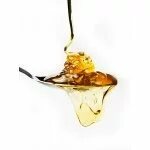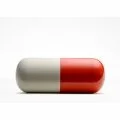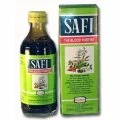Honey (100% pure honey)
We at GenGlob sale 100 % pure honey comes from the mountains of rural areas of madhya pradesh original raw honey collected from trees and mountains.It comes in 500 grams bottle package (1 kg and 5 kg packages available only on special order ).
Honey is a sweet aliment produced by honey bees (and some other species)[1] and derived from thenectar of flowers. According to the United States National Honey Board and various international food regulations, "honey stipulates a pure product that does not allow for the addition of any other substance…this includes, but is not limited to, water or other sweeteners".[2] This article refers exclusively to the honey produced by honey bees (the genus Apis); honey produced by other bees or other insects has very different properties.[3]
Honey gets its sweetness from the monosaccharides fructose and glucose and has approximately the same relative sweetness as that of granulated sugar (97% of the sweetness of sucrose, adisaccharide).[4][5] Honey has attractive chemical properties for baking, and a distinctive flavor which leads some people to prefer it over sugar and other sweeteners.[4]
Most micro-organisms do not grow in honey because of its low water activity of 0.6.[6] However, honey frequently[citation needed] contains dormant endospores of the bacterium Clostridium botulinum, which can be dangerous to infants as the endospores can transform into toxin-producing bacteria in the infant's immature intestinal tract, leading to illness and even death[7] (see Potential health hazards below).
The study of pollens and spores in raw honey (melissopalynology) can determine floral sources of honey.[8] Because bees carry an electrostatic charge, and can attract other particles, the same techniques of melissopalynology can be used in area environmental studies of radioactive particles,dust, or particulate pollution.[9][10]
A main effect of bees collecting nectar to make honey is pollination, which is crucial for flowering plants.[11]
Beekeepers encourage overproduction of honey within the hive so that the excess can be taken without endangering the bees. When sources of food for the bees are short, beekeepers may have to give the bees supplementary nutrition. Supplementary nutrition usually comes in the form of sugar (sucrose) mixed with water at proper ratios.[12]
Honey is a mixture of sugars and other compounds. With respect to carbohydrates, honey is mainly fructose (about 38.5%) and glucose (about 31.0%),[4] making it similar to the synthetically producedinverted sugar syrup which is approximately 48% fructose, 47% glucose, and 5% sucrose. Honey's remaining carbohydrates include maltose, sucrose, and other complex carbohydrates.[4] Honey contains trace amounts of several vitamins and minerals.[17] As with all nutritive sweeteners, honey is mostly sugars and is not a significant source of vitamins or minerals.[18] Honey also contains tiny amounts of several compounds thought to function as poisons, including sodium cyanide, pinobanksin, vitamin C,catalase, and pinocembrin.[19][20][vague] The specific composition of any batch of honey depends on the flowers available to the bees that produced the honey.[18]
Typical honey analysis[18]
- Fructose: 38.5%
- Glucose: 31.0%
- Sucrose: 1.0%
- Water: 17.0%
- Other sugars: 9.0% (maltose, melezitose)
- Ash: 0.17%
- Other: 3.38%
Honey has a density of about 1.36 kilograms per liter (36% denser than water).[21]
Isotope ratio mass spectrometry can be used to detect addition of corn syrup or sugar cane sugars by the carbon isotopic signature. Addition of sugars originated from corn or sugar cane (C4 plants, unlike the plants used by bees which are predominantly C3 plants) skews the isotopic ratio of sugars present in honey, but does not influence the isotopic ratio of proteins; in an unadulterated honey the carbon isotopic ratios of sugars and proteins should match. As low as 7% level of addition can be detected
Your Review: Note: HTML is not translated!
Rating: Bad Good
Enter the code in the box below:












